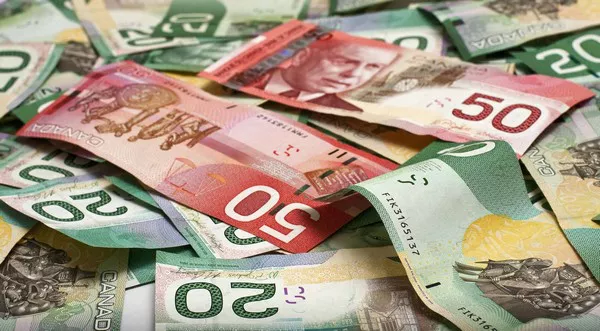When it comes to the adoption of polymer banknotes, Canada has gained international recognition for pioneering the use of durable and secure plastic currency. However, Canada (CAD) is not the only country to have embraced polymer banknotes as a secure and technologically advanced alternative to traditional paper-based currency. Several nations around the world have followed suit, introducing polymer banknotes into their monetary systems. In this article, we will explore the global adoption of plastic money, highlighting countries beyond Canada that have incorporated polymer banknotes and the reasons behind this transition.
Australia: A Trailblazer in Polymer Banknotes
Australia is widely recognized as a trailblazer in the adoption of polymer banknotes, having introduced the world’s first fully circulating series of polymer currency in 1988. The decision to transition from paper-based banknotes to polymer was driven by the need for enhanced security, longevity, and resistance to counterfeiting. The inaugural release of Australia’s polymer banknotes included the $10 note, which featured advanced security elements and the distinct tactile and durable qualities of polymer.
Since then, Australia has progressively replaced its paper-based banknotes with polymer counterparts, introducing new designs and incorporating innovative security features tailored to the unique requirements of each denomination. The transition to polymer banknotes in Australia has been widely hailed as a landmark advancement in currency technology, setting a precedent for other nations seeking to enhance the security and durability of their currency.
United Kingdom: Embracing Polymer for Enhanced Resilience
The United Kingdom embarked on its transition to polymer banknotes in 2016 with the introduction of the five-pound polymer note featuring the image of Winston Churchill. This marked the beginning of the Bank of England’s initiative to replace its paper-based banknotes with polymer alternatives, emphasizing durability, cleanliness, and advanced security as key drivers behind the shift.
Following the successful introduction of the five-pound polymer note, subsequent denominations, including the ten-pound and twenty-pound notes, were also released in polymer format, integrating features aimed at deterring counterfeiting and ensuring a longer lifespan for the currency in circulation. The adoption of polymer banknotes in the United Kingdom reflects a commitment to modernizing the nation’s currency and aligning with global best practices in currency security and resilience.
New Zealand: Innovating with Polymer Banknotes
New Zealand joined the ranks of nations embracing polymer banknotes as part of its efforts to enhance the security and longevity of its currency. The decision to transition from paper-based banknotes to polymer was motivated by the need to address concerns related to durability, counterfeiting, and environmental sustainability. In 1999, New Zealand introduced its first polymer banknote, a commemorative polymer five-dollar note, followed by subsequent releases of regular circulation polymer banknotes.
The use of polymer banknotes in New Zealand has been characterized by a commitment to incorporating sophisticated security elements, innovative designs, and eco-friendly materials that align with the nation’s focus on environmental stewardship and technological advancements. The resilience, cleanliness, and enhanced security of polymer banknotes have positioned them as a preferred choice for New Zealand’s currency system, reflecting a proactive approach to currency innovation.
Singapore: Elevating Security with Polymer Banknotes
Singapore has made significant strides in elevating the security and durability of its currency through the adoption of polymer banknotes. The Monetary Authority of Singapore commenced the issuance of polymer banknotes in 1999, marking a strategic shift towards a more resilient and secure currency format. The introduction of polymer banknotes in Singapore was driven by the desire to combat counterfeiting, improve longevity, and enhance the overall user experience.
Polymer banknotes in Singapore are engineered to withstand the demands of daily circulation while incorporating advanced security features, including holographic elements, transparent windows, and tactile enhancements that contribute to their distinctiveness and authenticity. The incorporation of these security measures has bolstered confidence in Singapore’s currency and aligned it with global standards for secure, technologically advanced banknotes.
Other Countries Embracing Polymer Banknotes
Beyond the aforementioned nations, several other countries have embraced polymer banknotes as an integral component of their currency systems. Nations such as Brunei, Romania, Malaysia, and Fiji have incorporated polymer banknotes into their monetary frameworks, leve
raging the advanced security, cleanliness, and durability benefits offered by polymer substrates. The adoption of polymer banknotes in these countries underscores a global trend towards embracing innovative currency solutions that prioritize security, resilience, and user experience.
See Also: CAD: History, Symbols, Codes, & Denominations
Conclusion
In conclusion, while Canada has played a pioneering role in the adoption of polymer banknotes, it is evident that the use of plastic money is a worldwide phenomenon. From Australia to the United Kingdom, New Zealand, Singapore, and beyond, the transition to polymer banknotes reflects a global commitment to elevating currency security, resilience, and user experience. As nations continue to embrace innovative monetary solutions, the adoption of polymer banknotes stands as a testament to the evolving nature of currency systems, driven by a collective pursuit of enhanced security, durability, and trust in financial instruments around the world.


